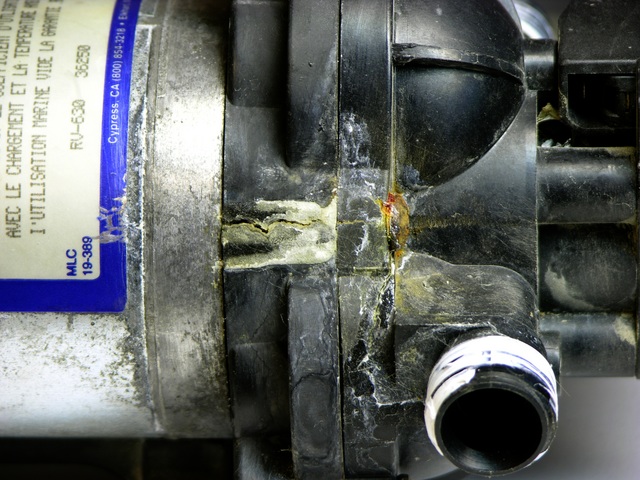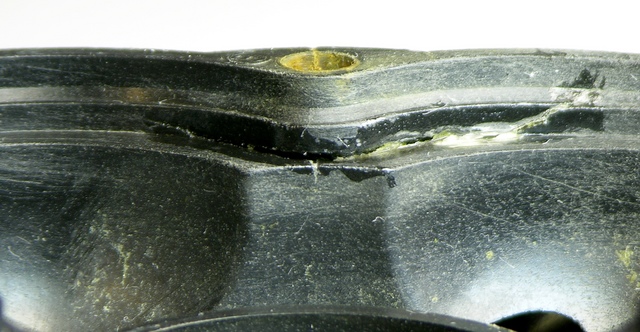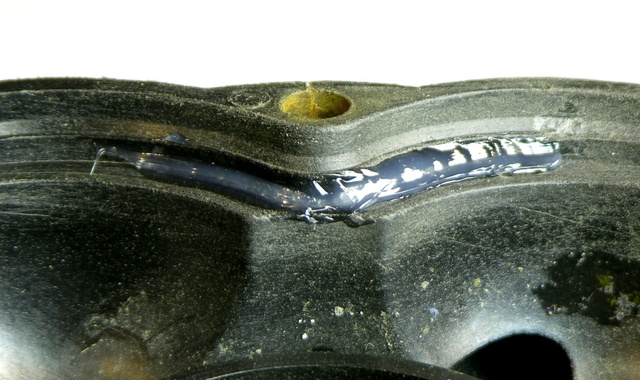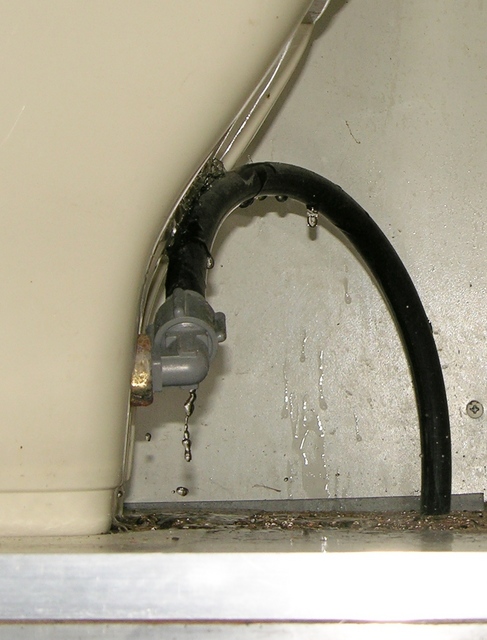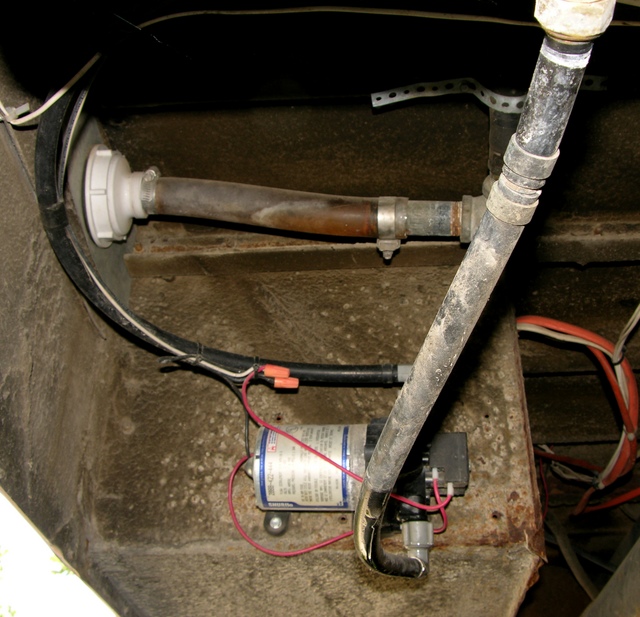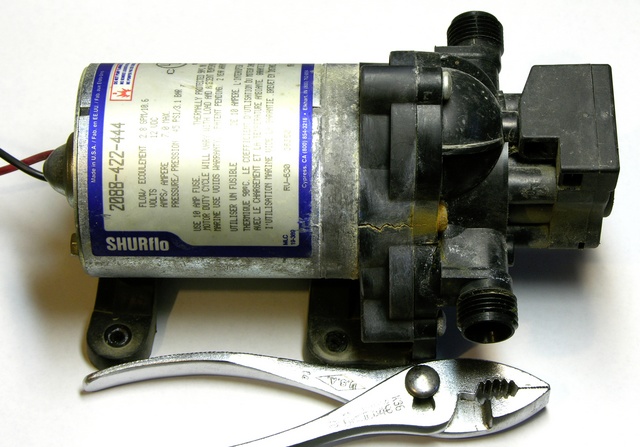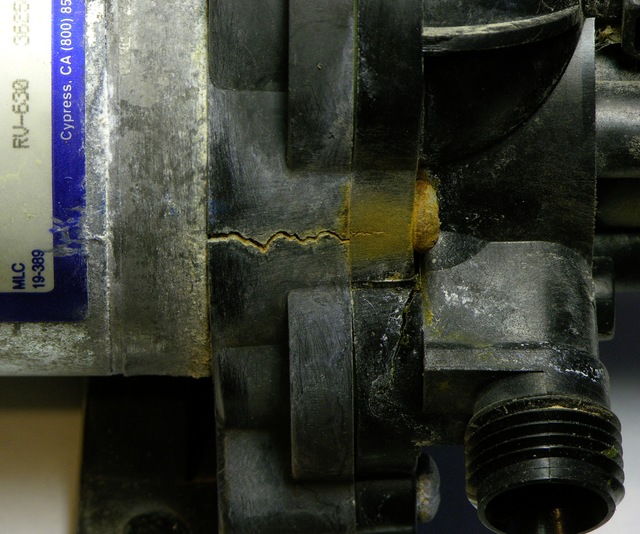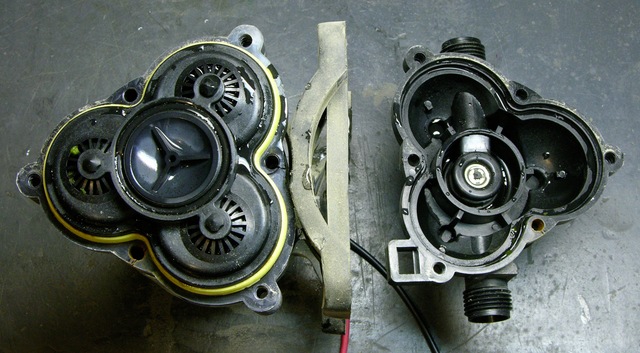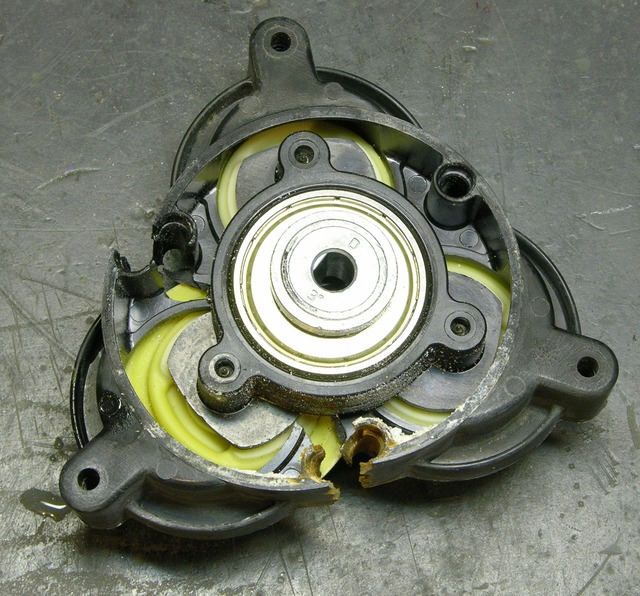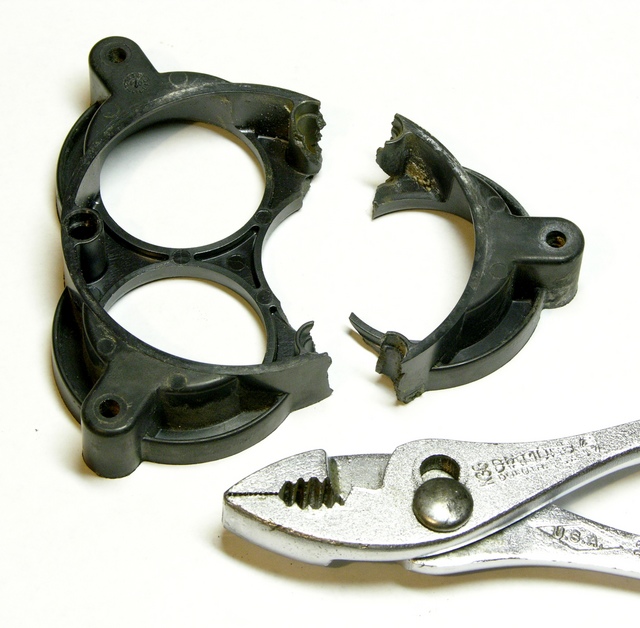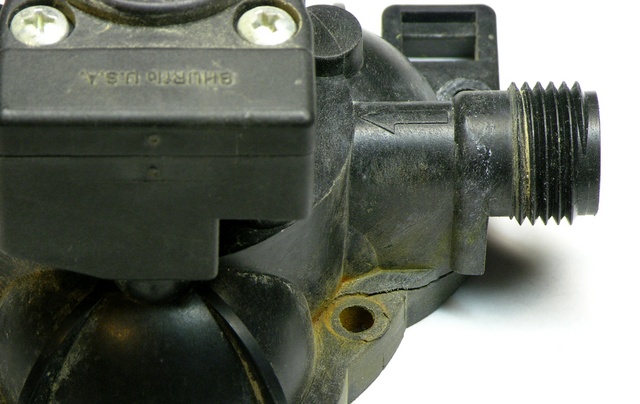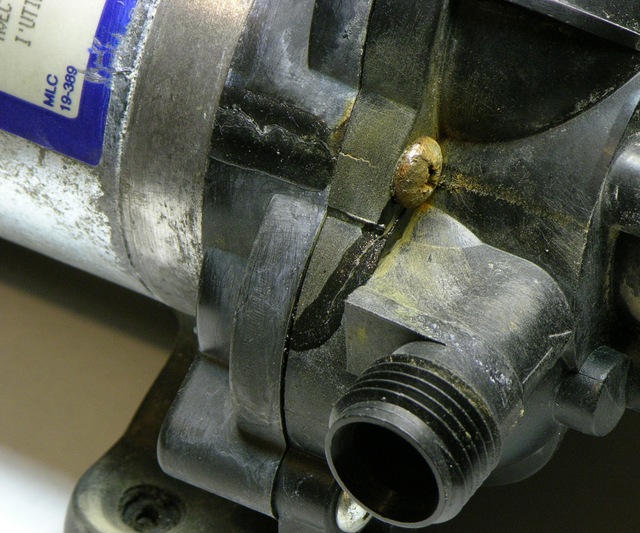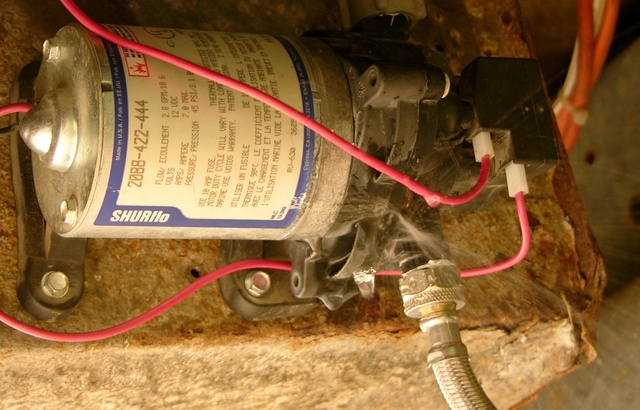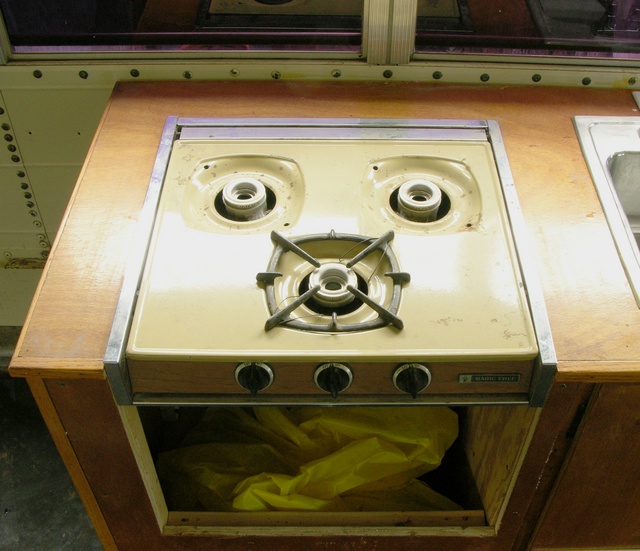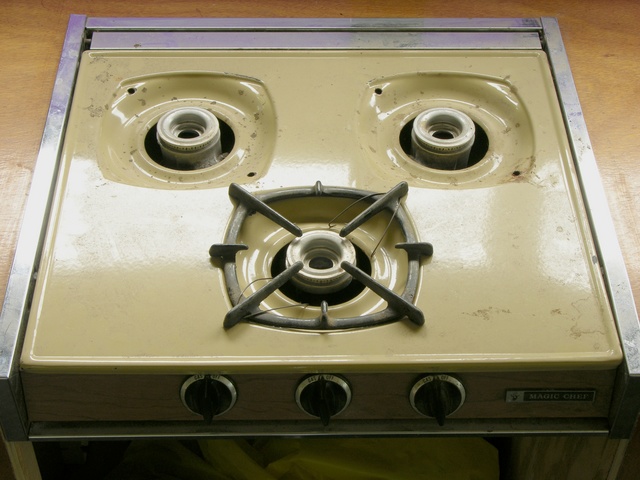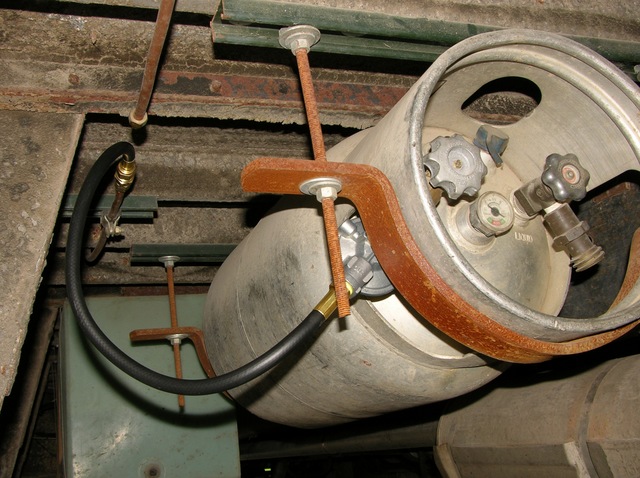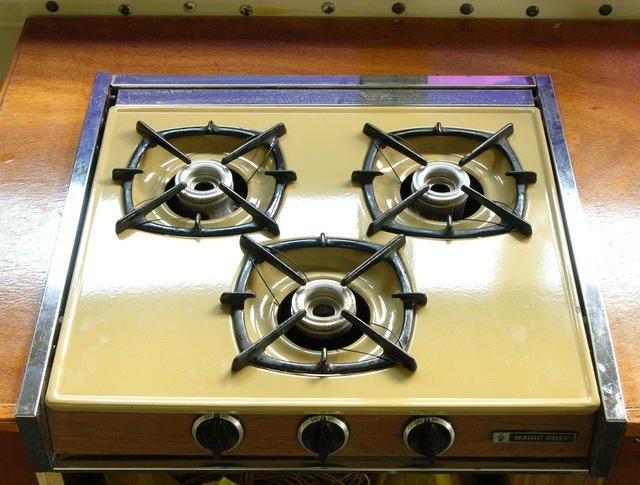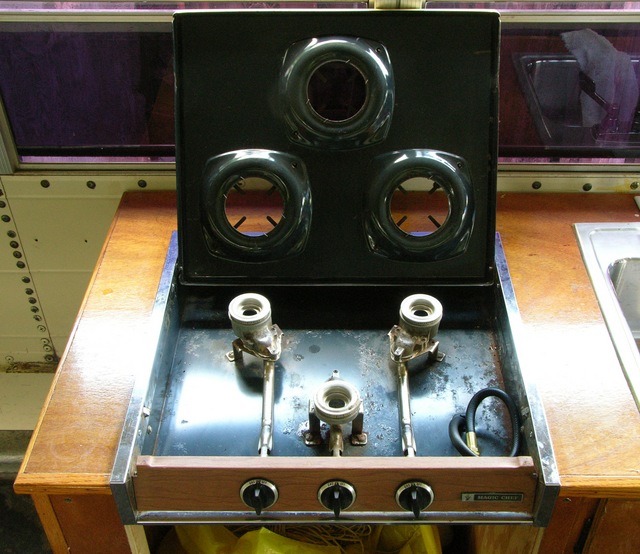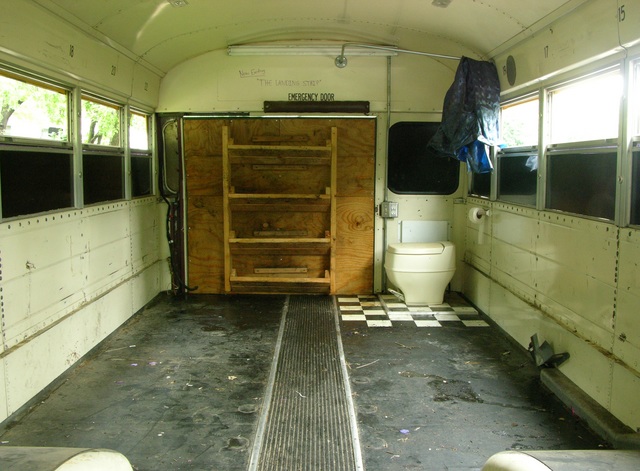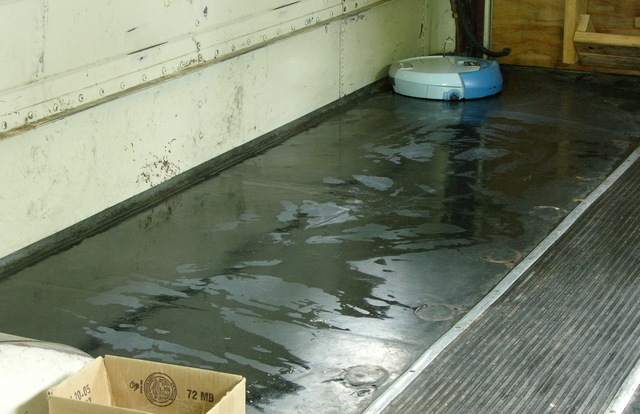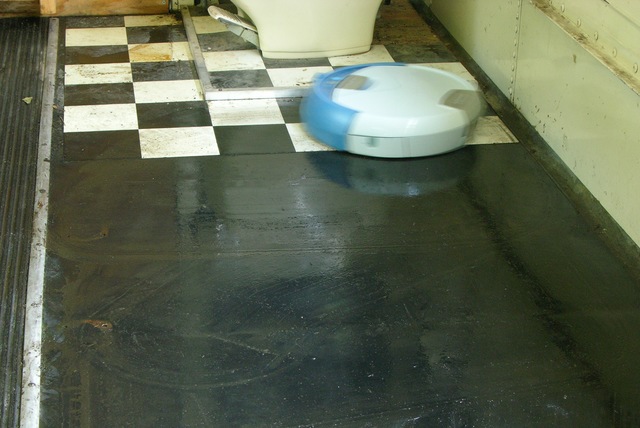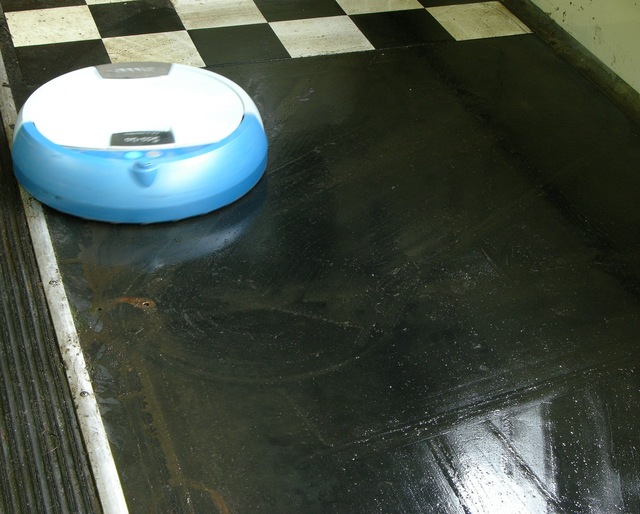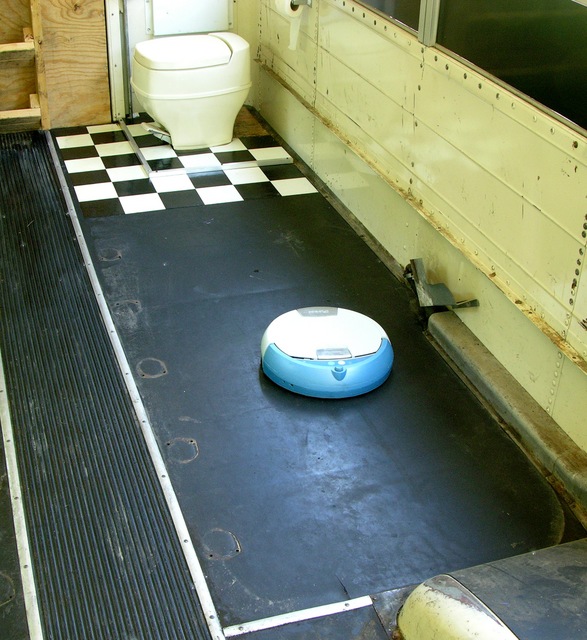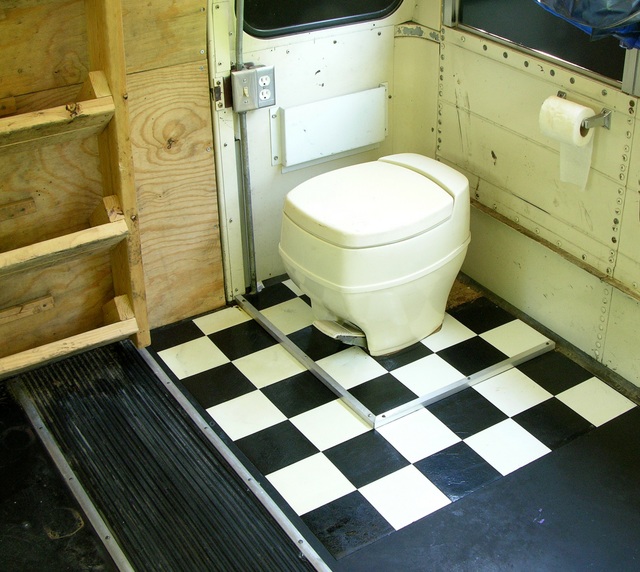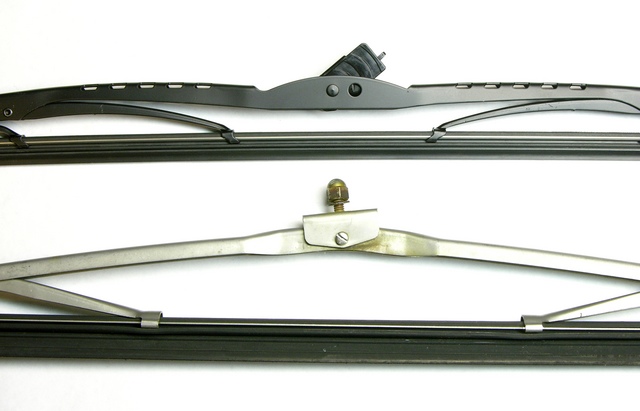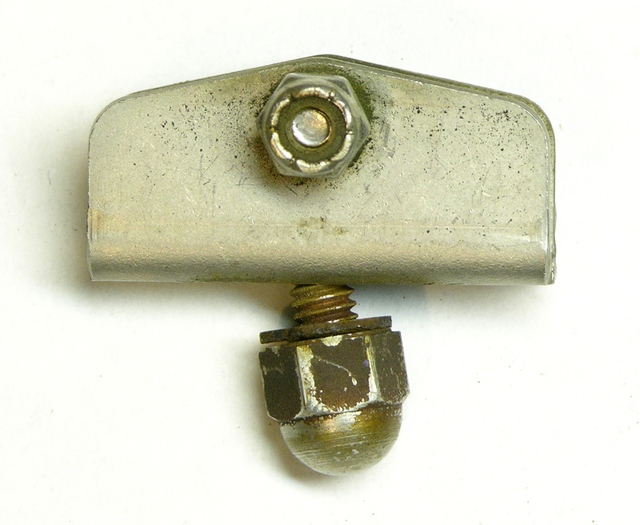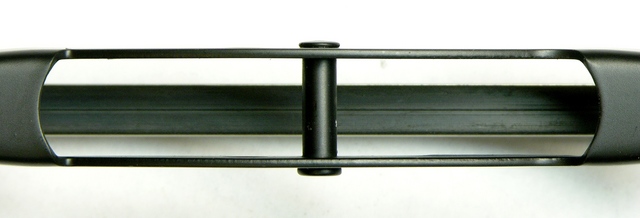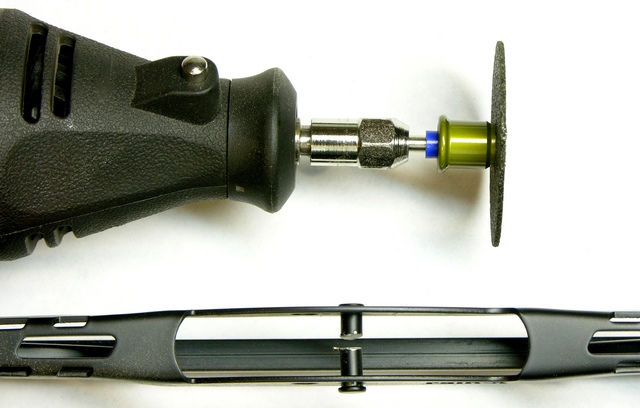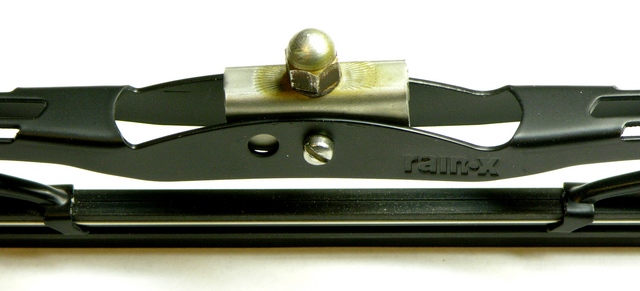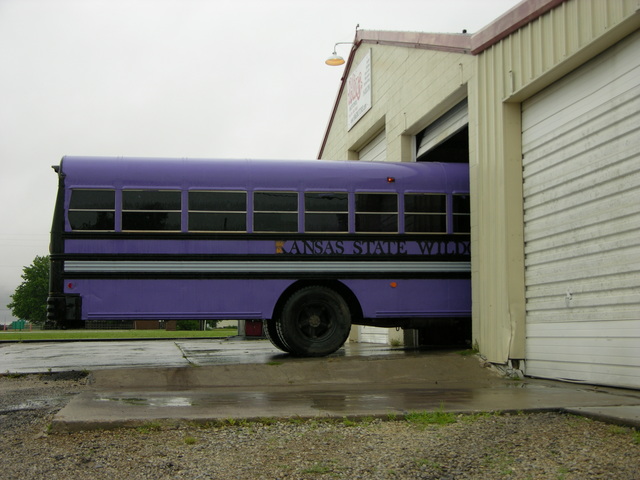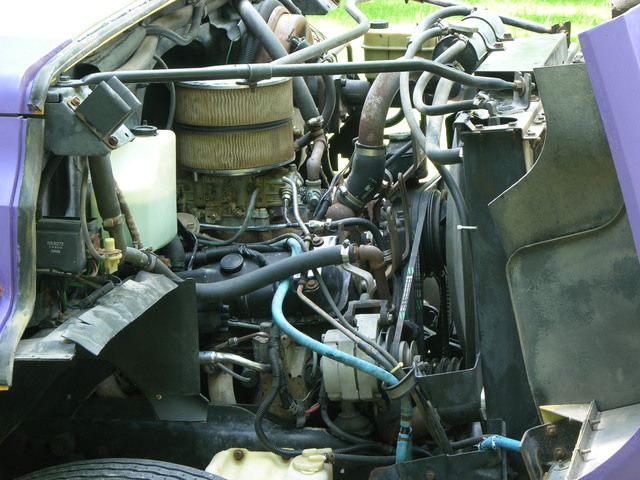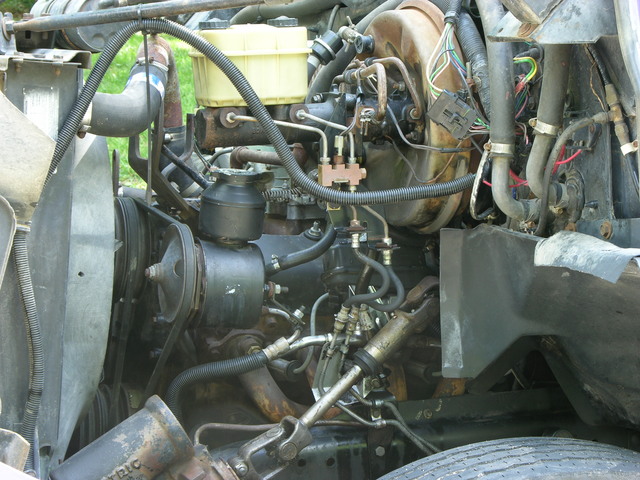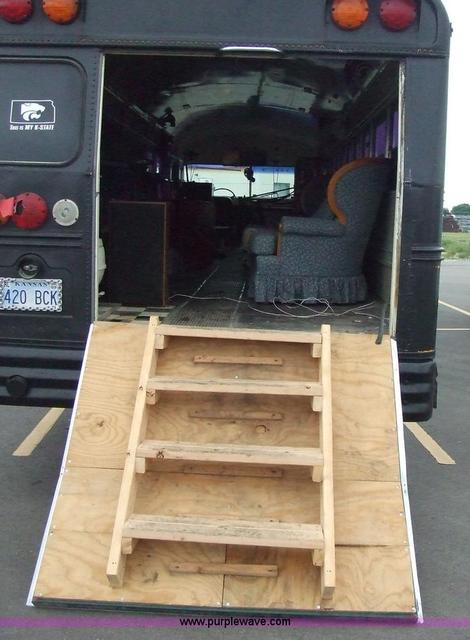
Currently if the bus is closed, I have to open the heavy rear door to get in.
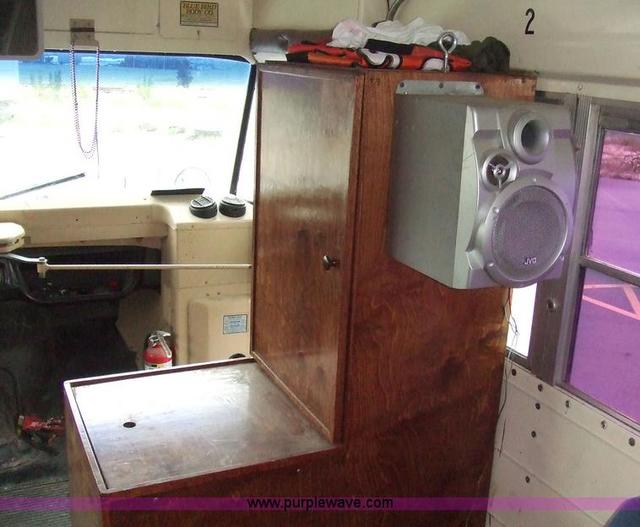
I don’t have a good picture of just the door, but the rod going horizontally across from the handle in the center of the bus to the door (hidden behind the cabinet) mechanically holds the door closed (by design) when the handle is latched in the closed position. As long as the handle stays latched, you can’t open the main passenger door from the outside.
With my highly-skilled momentum technique, I can close the front door from the outside so I don’t have to walk around, open the rear door, walk through, close the front door, walk around, and reclose the rear door; but once done, I then have to do the hokey-pokey to get back in.
I’d really like to be able to lock the passenger door and have a way to get in from the outside. And unlike many other bus-RV converters, I really don’t want to replace the bus door with an RV door — I’m not out to hide the fact that the vehicle started life as a bus. Until I have good reason to feel otherwise, I’d like to keep the accordion-fold door.
I’d love to motorize the door and add electronic entry — although at least in the long term, I need to have a purely mechanical way to get in, as backup in case something goes wrong with the motor.
Automotive Power Window Motor
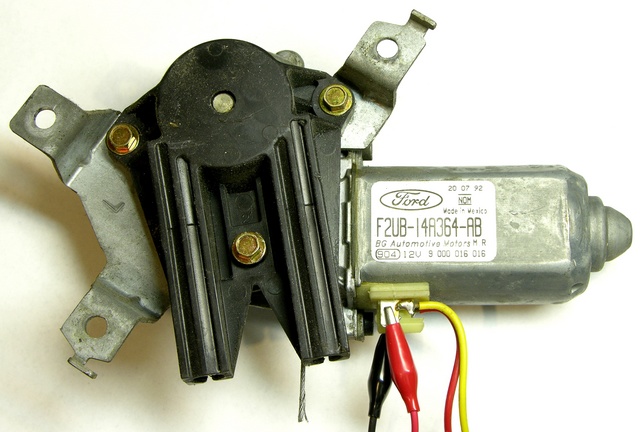
“Neighbor Dan” has a pile of removed auto parts in the corner of his shop, and a guy comes by occasionally to haul the pile to a scrapyard. Dan has offered me anything I want out of the pile, and he says he has three more of these power window motors that I haven’t found yet. I’ll keep digging.
I don’t know that this is the motor to use for my power door, but it bears consideration.
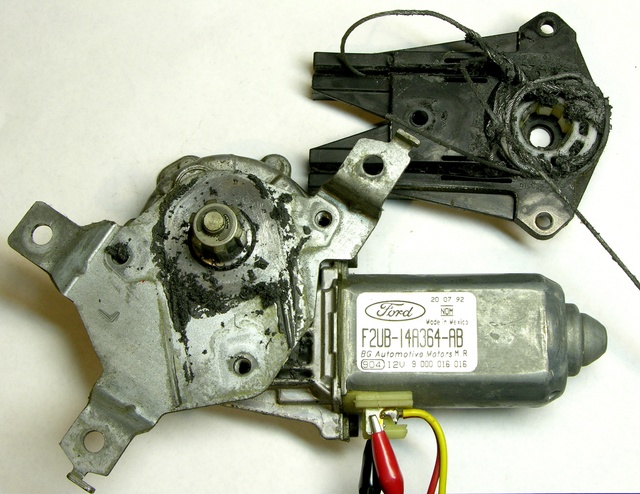
It looks pretty obvious why it was replaced — the cable is all messed up and broken where it wraps around the spool.
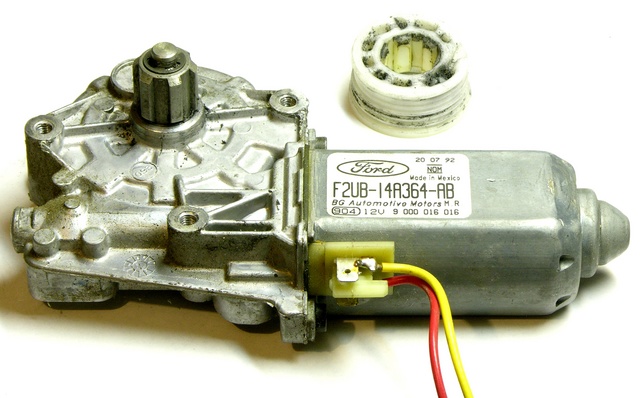
With the jammed-up cable spool taken care of, the output shaft spins at almost two rotations per second. That’s a little fast if I were going to attach it directly to the door-opening handle or use it to replace the handle altogether. If I were to do that, I might use pulse-width modulation (PWM) to slow it down.
The motor coil resistance is 1Ω or less, so the motor draws at least an amp and I’d need a pretty hefty FET to drive it. (A compensating factor is that the motor would normally have a pretty short duty cycle, so the FET wouldn’t have long to heat up.)
Alternatively, I could use the motor with the spool and cable (maybe one of the others isn’t as messed up) and use a larger pulley / spool on the handle end to “gear down” the rotational speed.
I’ve considered that I could remove the manual handle, do away with the connecting rod, and fabricate an entirely new means to close the door. But as it’s constructed now, the rod does double-duty closing the door and “locking” it shut once closed. If I did away with it, I’d have to recreate that functionality on my own.
I’m Open to Something Completely Different
If someone knows of a better way to lock and unlock a bus front door from the outside, or motorize an accordion-fold door, I’m all ears.


